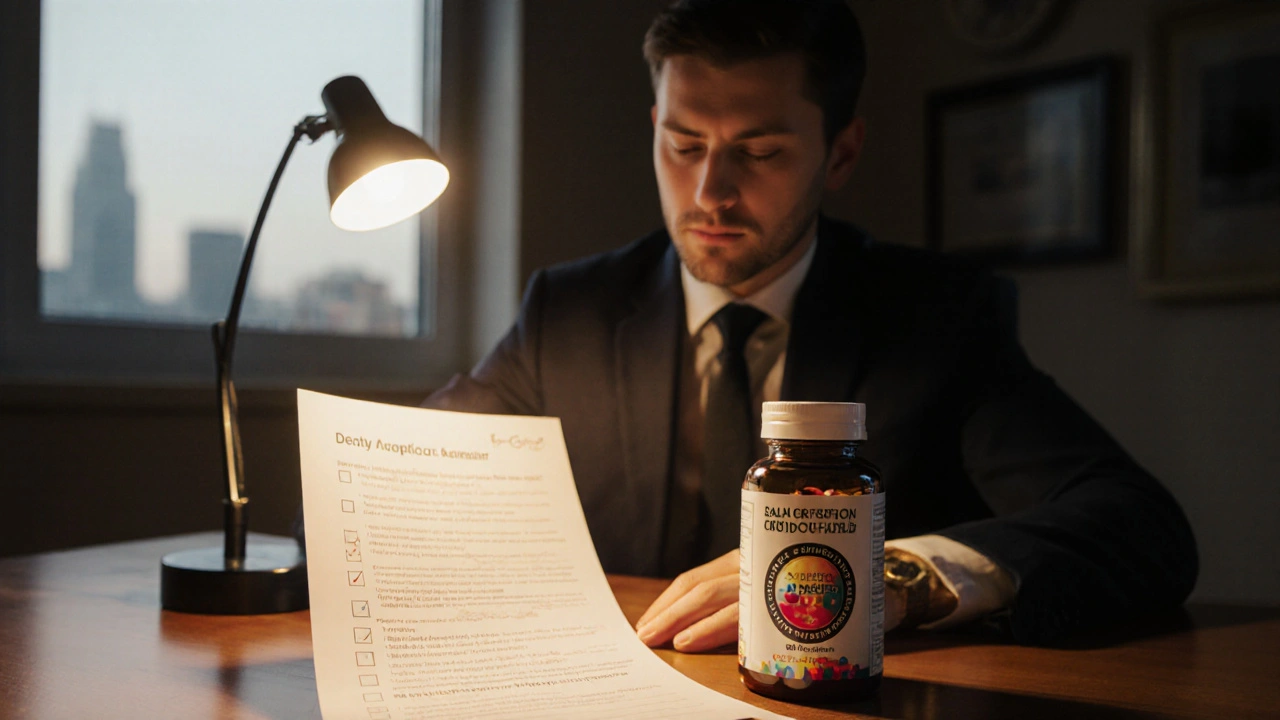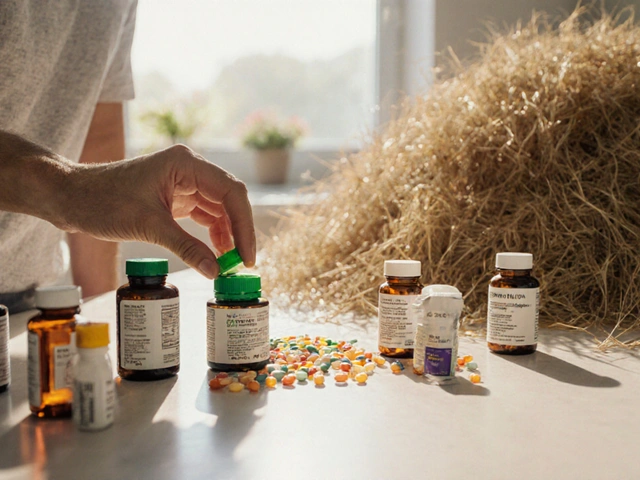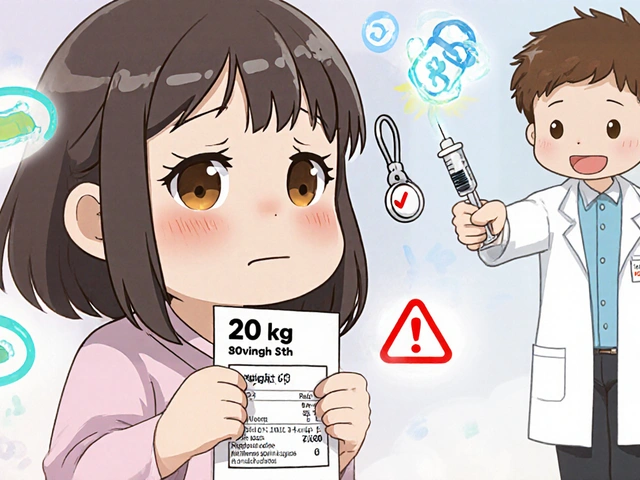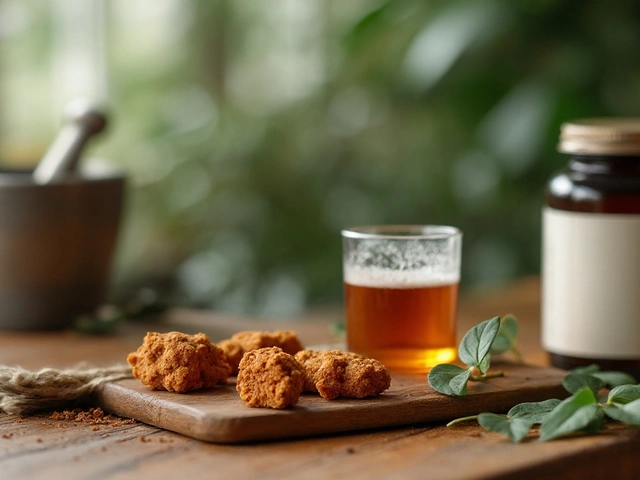Hair Loss Supplement Matchmaker
Find Your Personalized Supplement Plan
This tool helps you match the right supplements to your specific type of hair loss and nutrient needs based on medical evidence.
Finding a supplement that actually helps with alopecia feels like hunting for a needle in a haystack. The market is flooded with promises, but only a handful of ingredients have real backing, and not every product treats the same type of hair loss. This guide walks you through the science, the red flags, and the quick‑check list you need to pick the right hair loss supplements for your situation.
What Is Alopecia and Why Supplements Matter
When we talk about Alopecia is a medical condition that causes hair loss on the scalp or body, ranging from small patches (alopecia areata) to total baldness (alopecia totalis). The underlying causes vary: autoimmune attacks, hormonal shifts, nutrient deficiencies, or a combination of factors. Because the root cause differs, a one‑size‑fits‑all supplement rarely works.
Supplements step in where diet falls short or where a specific nutrient supports the hair‑growth cycle. They’re not a cure, but they can reduce shedding, strengthen follicles, and create a healthier environment for regrowth.
Key Ingredients Backed by Research
Not every ingredient on a label is created equal. Below are the nutrients that consistently show up in clinical studies or reputable reviews.
- Biotin (vitamin B7) supports keratin production and improves hair elasticity. Deficiency is rare but can cause thinning; 5,000µg daily is a common dose in trials.
- Saw Palmetto inhibits the conversion of testosterone to dihydrotestosterone (DHT), a hormone linked to follicle miniaturisation. A 320mg extract taken twice daily reduced shedding in a 12‑month study of men with androgenic alopecia.
- Vitamin D modulates immune function and may influence hair‑follicle cycling. Low serum levels are common in people with alopecia areata; 2,000IU daily is safe for most adults.
- Iron is essential for oxygen delivery to hair follicles; iron‑deficiency anemia is a known trigger for diffuse shedding. Ferritin testing before supplementing is advised; 18mg elemental iron is a typical therapeutic dose.
- Zinc plays a role in DNA synthesis and keratinocyte function. 30mg of elemental zinc per day helped men with androgenic alopecia in a double‑blind trial.
- Pumpkin Seed Oil contains phytosterols that also block DHT. A 400mg capsule taken twice daily reduced hair loss by 40% in a 24‑week study.
- Collagen Peptides provide amino acids that support the dermal papilla and skin elasticity. 10g daily improved hair thickness in a small pilot trial.
While these ingredients show promise, the quality of the extract, dosage, and combination matter a lot.
How to Spot a High‑Quality Supplement
Even a product with good ingredients can be a flop if the manufacturing standards are weak. Use this checklist before you click “add to basket.”
- Look for third‑party testing. Certifications from ConsumerLab or independent labs that verify label accuracy and purity are a green light.
- Check the exact dosage per serving. Some brands hide the amount in a “proprietary blend” - that’s a red flag.
- Prefer products made in facilities that follow Good Manufacturing Practice (GMP) and are inspected by the European Food Safety Authority (EFSA). While the EFSA doesn’t approve supplements, its audits indicate regulatory compliance.
- Avoid unnecessary additives. Artificial colours, excessive fillers, or high levels of sugars can outweigh any benefit.
- Check expiration dates and storage instructions. Fat‑soluble vitamins (like Vitamin D) can degrade if exposed to heat or light.

Popular Supplement Options - Quick Comparison
| Brand | Main Ingredients | Daily Dose | Third‑Party Certified? | Price (30‑day supply) |
|---|---|---|---|---|
| NutraGrow Max | Biotin 5000µg, Saw Palmetto 320mg, Zinc 30mg | 2 capsules | ConsumerLab | £34.99 |
| HairWell Complete | Vitamin D 2000IU, Iron 18mg, Collagen 10g | 1 scoop + 1 tablet | NSF Certified | £42.50 |
| Follicle Boost | Pumpkin Seed Oil 400mg, Biotin 2500µg, Vitamin B12 25µg | 2 softgels | In‑house testing only | £29.00 |
Notice how the first two brands list exact dosages and have reputable third‑party seals, while the third relies on internal testing. If you’re serious about results, lean toward the first two.
Matching Supplements to Alopecia Types
Not every formula suits every form of hair loss. Here’s a quick guide:
- Androgenic alopecia (male or female pattern): Focus on DHT blockers (Saw Palmetto, Pumpkin Seed Oil) and micronutrients that support follicle health (Biotin, Zinc).
- Alopecia areata: Immune‑modulating nutrients matter. Vitamin D, Zinc, and Iron (if deficient) can calm the autoimmune flare‑up.
- Telogen effluvium (stress‑related shedding): A blend of Biotin, Collagen, and Vitamin D helps rebuild the hair shaft while you address the underlying stress.
Always get a blood panel if you suspect iron or vitamin D deficiency - supplementing without data can lead to excess intake and side effects.
Safety Tips and Common Pitfalls
Supplements are ‘natural’ but not risk‑free. Keep these pointers in mind:
- Biotin can interfere with lab tests (e.g., thyroid, cardiac markers). Inform your doctor if you’re taking >5000µg.
- High doses of iron in people with normal levels cause constipation, nausea, and organ damage. Test ferritin first.
- Saw Palmetto may affect blood clotting. If you’re on anticoagulants, talk to a clinician before starting.
- Pregnant or nursing individuals should stick to prenatal‑specific formulas; many hair‑loss blends haven’t been studied for safety in pregnancy.

Putting It All Together - Your Personal Checklist
- Identify your alopecia type (pattern, areata, telogen). Write it down.
- Get a basic blood test: ferritin, vitamin D, thyroid panel, and if possible, hormone profile.
- Match the test results to supplement gaps. Example: low ferritin→Iron; low vitamin D→Vitamin D.
- Choose a product that lists exact dosages for the needed ingredients and carries a third‑party seal.
- Start with the lowest effective dose for 8‑12 weeks. Track shedding frequency and any side effects in a simple spreadsheet.
- Re‑evaluate after the trial period. If no improvement, consider swapping one ingredient (e.g., try Saw Palmetto instead of Biotin) or consult a dermatologist.
This systematic approach turns guesswork into data‑driven decisions, boosting your chances of seeing new hairs.
When to Seek Professional Help
If you notice any of the following, stop self‑medicating and book an appointment:
- Rapid hair loss (>50% of scalp in weeks)
- Scalp redness, scaling, or sores
- Accompanying symptoms such as weight change, fatigue, or menstrual irregularities
- None of the above improvements after 6 months of consistent supplementation
A dermatologist can rule out other conditions (e.g., scalp psoriasis, fungal infection) and may prescribe topical minoxidil, low‑dose oral finasteride, or targeted injections.
Frequently Asked Questions
Can I take hair loss supplements with other medications?
Most supplements are safe alongside common meds, but ingredients like Saw Palmetto can thin the blood, so if you’re on anticoagulants (warfarin, aspirin) you should check with your doctor. Biotin can skew lab results, so let any lab know you’re taking it.
How long does it take to see results?
Hair grows in cycles of about three months. Most clinical trials report noticeable reduction in shedding after 8‑12 weeks, with visible regrowth often taking 4‑6 months of consistent use.
Are natural supplements better than prescription drugs?
Natural supplements are generally milder and have fewer side effects, but they also tend to produce modest results. Prescription treatments (minoxidil, finasteride) have stronger evidence for regrowth but come with higher risk of adverse effects. Many people combine both under medical guidance for the best outcome.
Do I need to take all the ingredients together?
Not necessarily. Target the nutrients you’re deficient in. For example, if blood work shows low iron but normal vitamin D, focus on an iron supplement and skip the extra vitamin D.
Is there any risk of overdose?
Yes. Fat‑soluble vitamins (A, D, E, K) accumulate in the body, and minerals like iron and zinc can be toxic at high levels. Stick to the recommended daily amounts unless a clinician advises otherwise.







Julius Adebowale
October 14, 2025 AT 19:40The dosage figures lack proper units.
KISHORE KANKIPATI
October 15, 2025 AT 23:27Hey, I get why you’d point that out – clarity is key, especially when people are chasing results. It’s like trying to bake a cake without knowing if you need a cup of flour or a tablespoon. Let’s make sure every milligram is spelled out so nobody ends up over‑ or under‑dosing. A little consistency goes a long way toward trust.
Jefferson Vine
October 17, 2025 AT 03:13Picture this: you’re sipping your morning coffee, and behind the scenes a secret cabal of supplement manufacturers is tweaking labels to keep us guessing. It’s why every “proprietary blend” feels like a whisper from the shadow economy. Still, the science on biotin and saw palmetto is solid – just follow the peer‑reviewed doses. Don’t let the conspiratorial fog drown the real data, and you’ll steer clear of the hype. Stay vigilant, stay informed.
Thomas Ruzzano
October 18, 2025 AT 07:00Let’s cut the nonsense – if you’re not buying American‑made supplements that respect our standards, you’re basically funding foreign gimmicks. Our folks deserve products that champion the good‑old U.S. work ethic, not some glossy overseas label. Anything less is a betrayal of pride and health.
Dan Tenaguillo Gil
October 19, 2025 AT 10:47First, let me acknowledge the passion behind the previous comment and then gently steer us toward a broader perspective. While national pride in manufacturing can be admirable, the efficacy of a supplement hinges primarily on its ingredient quality, bioavailability, and rigorous third‑party testing, regardless of origin.
When evaluating products, start by verifying the exact dosage of each active ingredient – the “proprietary blend” label often masks sub‑therapeutic amounts.
Next, prioritize certifications from recognized labs such as ConsumerLab or NSF; these bodies assess purity, potency, and the absence of contaminants.
Third, consider the source of raw materials; sustainably harvested saw palmetto and cold‑pressed pumpkin seed oil retain higher active compounds than heavily processed extracts.
Fourth, examine the manufacturing facility’s compliance with Good Manufacturing Practices (GMP) and whether it undergoes regular FDA inspections, even if the supplement itself isn’t FDA‑approved.
Fifth, reflect on the therapeutic need: DHT blockers benefit androgenic alopecia, whereas immune‑modulating nutrients like vitamin D and zinc serve alopecia areata better.
Lastly, keep an eye on your personal health data – a baseline ferritin, vitamin D level, and thyroid panel will tell you whether iron, vitamin D, or biotin supplementation is warranted.
In short, choose products that are transparent, scientifically backed, and aligned with your specific deficiency profile, not merely those that bear a patriotic label. By taking this systematic approach, you’ll maximize the odds of seeing genuine hair‑growth results while minimizing wasted dollars.
Tiffany Owen-Ray
October 20, 2025 AT 14:33Think of your hair journey as a marathon, not a sprint. Every step – from a balanced diet to the right supplement – builds momentum toward the finish line. Consistency over eight to twelve weeks often reveals the true impact.
Jill Brock
October 21, 2025 AT 18:20Oh, the drama of watching those follicles whisper back to life! If you ignore the minutiae, you’ll never hear the triumphant roar of regrowth.
Liliana Phera
October 22, 2025 AT 22:07It's all about balance – the right nutrients can coax the scalp into a healthier rhythm. Remember, patience is as essential as the supplement itself.
Dean Briggs
October 24, 2025 AT 01:53Let’s pool our collective knowledge and map out a clear plan. First, confirm your alopecia type and run the basic labs – ferritin, vitamin D, and thyroid. Second, match any deficiencies to targeted supplements, ensuring each ingredient’s dosage mirrors the clinical trials. Third, select a product with a transparent label and third‑party verification to guarantee potency. Fourth, adhere to a low‑and‑slow dosing schedule for eight weeks, documenting shedding frequency and any side effects. Finally, reassess the data and adjust the formula or add a new agent if progress stalls. Collaboration yields the most reliable outcomes.
Sadie Speid
October 25, 2025 AT 05:40Great plan! Keep tracking your results in a simple spreadsheet for maximum clarity.
Sue Ross
October 26, 2025 AT 08:27I appreciate the thorough breakdown and the emphasis on lab testing. It’s reassuring to see safety highlighted alongside efficacy. Maintaining a balanced perspective helps many avoid the pitfalls of over‑supplementation.
Rohinii Pradhan
October 27, 2025 AT 12:13While the advice is generally sound, a few grammatical inconsistencies merit correction. For instance, “biotin can interfere with lab tests” should read “Biotin can interfere…”. Additionally, “the most reliable outcomes” ought to be preceded by “to achieve”. Such precise language bolsters credibility.